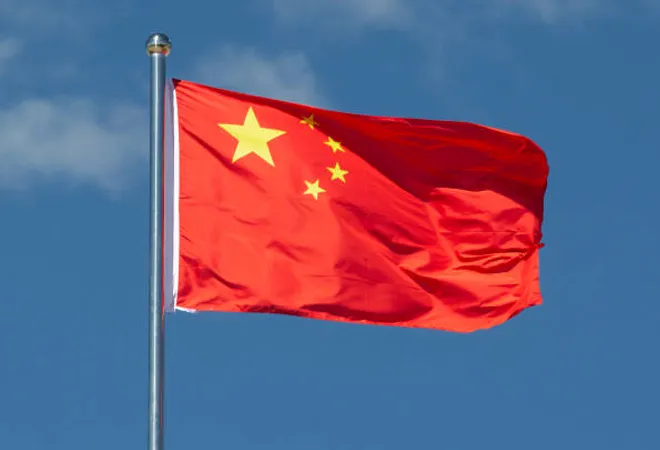-
CENTRES
Progammes & Centres
Location
China is trying to make amends to address some of the longstanding issues with its development projects.

This is the 132st article in the series–The China Chronicles.
The rise of China as a development partner and its impact on international development have been the talking points in international relations for over a decade now. However, the scholars and commentators were always divided on the subject. While many described China as a ‘neo-colonizer’ with a primary interest in resources, others argued that Chinese development cooperation was beneficial to partner countries, especially African countries, as the country was willing to provide finance for huge infrastructure projects—an area hitherto ignored by western donors—which are critical for growth and development. Significant concerns were also raised about the violation of environmental and labour standards, corruption, and lack of local job creation in Chinese projects.
Chinese financial flows curtailed the ability of western donors and the Bretton Woods institutions to shape the international development narrative single-handedly.
Huge financial flows from China and the nature of its development partnerships, which rested on the principles of no-political conditionalities and mutual benefit or ‘win-win partnerships’, posed a major challenge to the western dominance in the international development landscape. Between 2000 and 2019, China committed concessional loans worth US$ 153 billion to African countries through the China EXIM Bank and the China Development Bank. Many of the partner countries, particularly those in Africa, welcomed Chinese development cooperation because they preferred non-interference and demand-driven development, geared towards mutual benefit as opposed to the western model of development cooperation which was characterised by policy prescription and a paternalistic attitude. African leaders, like Meles Zenawi, welcomed Chinese development partnership as a new approach to development and more meaningful South-South cooperation. Thus, Chinese financial flows curtailed the ability of western donors and the Bretton Woods institutions to shape the international development narrative single-handedly.
However, Chinese loans were always controversial because many experts raised concerns over debt-sustainability in developing countries, non-concessional terms, and the opacity around the loan agreements. For instance, the International Monetary Fund’s concerns about the Democratic Republic of Congo’s debt sustainability led to the re-negotiation of the Sicomines agreement between the Democratic Republic of Congo government and a consortium of Chinese companies in 2009. Concerns around debt sustainability have grown in recent years and Chinese lending for infrastructure development has often been called ‘debt trap diplomacy’. Some scholars also argued that the actual value of Chinese loans to other developing countries is much higher because majority of the lending is directed to state-owned banks, state-owned companies, special purpose vehicles, joint ventures, and private sector institutions which do not appear on government balance sheets. Many developing countries are much more sceptical about Chinese loans now. Countries like Kenya, Democratic Republic of Congo, and Tanzania have also cancelled Chinese projects or renegotiated Chinese loan agreements. While cancelling a Chinese credit line worth US$ 10 billion, the Tanzanian President, John Magufuli, labelled the loan a ‘killer Chinese loan’ which ‘only a drunkard would accept’. Recently, Bangladesh’s Finance Minister, Mustafa Kamal, also warned developing countries of taking loans from China, under the Belt and Road Initiative, arguing that China’s poor lending practices are pushing many developing countries into debt distress.
While cancelling a Chinese credit line worth US$ 10 billion, the Tanzanian President, John Magufuli, labelled the loan a ‘killer Chinese loan’ which ‘only a drunkard would accept’.
China’s lending practices are now increasingly being questioned by developing countries and many countries are reticent of taking more loans from China. On the other hand, China’s strategy has also evolved in recent years. After nearly two decades, China seems to be finally trying to course-correct by restricting its lending, establishing a development cooperation agency to oversee its development partnerships, and releasing a white paper which addresses some of the main criticisms of Chinese projects. In 2019, Chinese lending commitments to Africa declined by 30 percent from US$ 9.9 billion to US$ 7 billion. Moreover, Chinese financiers stopped lending to countries in debt distress like Zambia, Angola, Kenya, and Ethiopia and most of the lending has been channelled to other countries like Egypt and South Africa. In fact, Kevin Acker and Deborah Brautigam argue that Chinese lending to Africa had slowed down from 2013 onwards due to China’s own concerns over debt sustainability and a change in the composition of Chinese actors involved in external lending. China Eximbank—the only bank which provides concessional loans—has reduced its external lending over the years and Chinese commercial banks, which are more concerned about profitability, are increasingly providing a larger share of external loans. In 2018, the China International Development Cooperation Agency (CIDCA) was established. This was a fundamental change in the institutional architecture of Chinese development cooperation. The main objectives of CIDCA are to improve the coordination between several government departments involved in the Chinese development assistance projects and address concerns regarding corruption, poor project implementation, and wasteful spending. In January 2019, China issued its third white paper on foreign aid which highlights China’s commitment to improve governance in international development cooperation, invest more in feasibility studies of development projects, analyse the environmental impacts of the project, and evaluate post-project operation and management. Further, China will work towards a new model where recipient countries will implement the projects on their own with funding and technical support from China so that local employment can be generated. Thus, China is clearly trying to make amends to address some of the longstanding issues with its development projects.
The views expressed above belong to the author(s). ORF research and analyses now available on Telegram! Click here to access our curated content — blogs, longforms and interviews.

Dr Malancha Chakrabarty is Senior Fellow and Deputy Director (Research) at the Observer Research Foundation where she coordinates the research centre Centre for New Economic ...
Read More +